Bait Use 101
Art Morris, Outreach Specialist, Corpus Christi Field Station
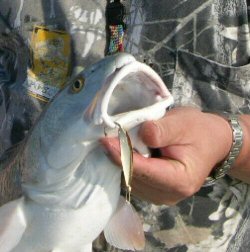
I would never have guessed that the fish that took my topwater while fishing the rocks off the Kenedy Ranch shoreline of the upper Laguna Madre was a pompano until it made about five jumps and ran me around the boat in a matter of seconds. What possessed that proverbial bottom feeder to strike a topwater lure is beyond me, or the 6-foot tarpon that took my one-half oz Rat–L–Trap and literally ran to Cuba with it? One might speculate that "it seemed like a good idea at the time". It appears to go against common sense to attempt to eat something a fraction of its size or twice the size of its mouth. It is widely accepted by the scientific community having opportunist feeding strategies gives fish advantages over those that specialize on one particular food source. However, we may never know why a fish strikes uncommon or unnatural baits, or for that matter, what makes one bait more effective than another, but we can identify what works most of the time.

Each year, lure manufacturers — obviously with lots of time on their hands — spend thousands of dollars and untold hours developing the "lure of all times" or baits that make fish bite when they did not know they should. Currently, lures come in more styles and colors than ten interior decorators can identify. If that weren't enough, you can get many combinations. I guess that's for folks who have difficulties deciding which one to use. And to top it off, literally tons of natural baits are landed and sold to meet angler demand. With that many choices out there and the many claims to their effectiveness, it is a wonder why we do not catch every fish out there. Fortunately there is some research on bait use in Texas that relies on more than marketing and we can use to help us catch more fish. The research can tell which baits are most successful and those that are least successful. Notice I said "least successful" versus "not successful" for there are always exceptions to the rule. As indicated by the above examples.
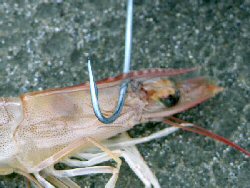
Research conducted in Texas over the past 30+ years all say the same thing. Live shrimp is the bait of choice for targeting all marine sportfish in Texas. Spotted seatrout, red drum, black drum, southern flounder and many others find it extremely difficult to pass on a live shrimp. Most recent numbers from 2006 indicate that 1 in 4 fish landed from Texas inshore waters by private boat anglers were caught on live shrimp. Readily available almost year round, inexpensive and easy to use, live shrimp are the bait most anglers choose and are effective. It should be no surprise that shrimp are so effective — because most sportfish grow up eating shrimp and never lose their appetite.
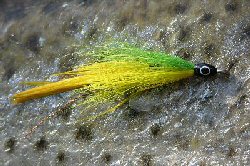
If you will notice, the top bait is natural — seems difficult to improve on Mother Nature. But for those that do not like to get their hands dirty, soft plastics are the top artificial lure and second most effective bait type overall. Shrimp tails, shad tails, paddle tails, whip tails, no tails — it does not matter. They work. Some even impersonate natural baits so well, that it takes a marine biologist to tell the difference. Then again others resemble something Steven Spielberg invented rather than some critter found in the wild. Some come impregnated with a super top secret fish attractant recipe guarded from the world tighter than the gold at Fort Knox. While there are more varieties than there is food on a Chinese lunch buffet, there appears to be one universal belief among anglers — no one can own enough different styles, colors and sizes to meet every conceivable situation that one might encounter. The bottom line is that 23% of the fish landed by Texas private inshore boat anglers are on soft plastics. Soft plastics are simple to use, can be presented in a variety of ways and are historically successful.
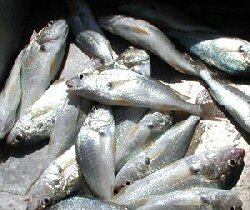
The fastest growing bait of choice among Texas anglers is live baitfish. In the mid 1980's the bait ranked 10th in use coastwide. Atlantic croaker, pigfish, and mullet have rapidly become popular baits, especially for spotted seatrout. Spotted seatrout become piscivorous (fish-eating) when they reach 20" or so. Thus it is no mistake that live baitfish are highly effective for these popular gamefish. Additionally, even though they tend to eat just about everything, few self respecting red drum will turn down a live finger mullet. Many a flounder are caught on a killifish (mudminnows) which many anglers believe is the bait of choice.
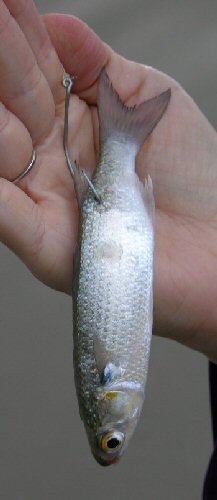
While most anglers can catch almost everything on any of the top three baits mentioned previously, dead fish enters the list as fourth choice. Combined, these four baits account for about 82% of all fish landed by private boat anglers in Texas bays. Available year round, fresh or frozen, whole or cut up, dead fish will entice about anything that swims, particularly when used to target bottom feeders such as red drum, pompano, etc.
Finally there are the rest of the baits: dead shrimp, sea lice, fish-like lures, spoons, jigs, flies, crank baits, floating baits, suspending baits, sinking baits, chuggers, sprayers, cut baits, shallow divers, spinner baits, buzz baits, crabs, squid and more combinations than Stephen King can imagine. All together these account for about 18% of all inshore species landed by private boat anglers. And if that were not enough, you can get dips and sprays to make your realistic bait more "realistic". The end result: anything can and will work for any species at any given time.
Some bait is almost universally accepted as "go to" bait for specific species; such as using gold spoons for red drum or dead shrimp for black drum. Tell that to the red drum that takes a red and white topwater or a lure-caught black drum. What is it about pink and chartreuse lures? Many anglers do not leave home without them. I know I have not seen everything that swims in the ocean, but I can say with some confidence that there are no chartreuse mullet swimming around Baffin Bay. Yet, these colors and a rainbow of otherworldly colors produce — and produce well.
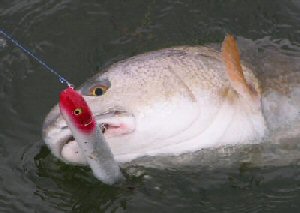
So if you are into "lure collecting" like me and need a bigger boat to haul all of your lures, then there will be a time and a place when some lure in the collection will trigger a strike from an unsuspecting predator who thinks that that horizon colored, top secret garlic impregnated, waggin' tailed super-lure-of-all-time is breakfast. However, if you are into substance on a routine basis — natural baits are unbeatable overall. It is tough for us to create something that will beat what nature has provided for fish to eat since time immemorial.
© Copyright Texas Parks and Wildlife Department. No part of this work may be copied, reproduced, or translated in any form or medium without the prior written consent of Texas Parks Wildlife Department except where specifically noted. If you want to use these articles, see Site Policies